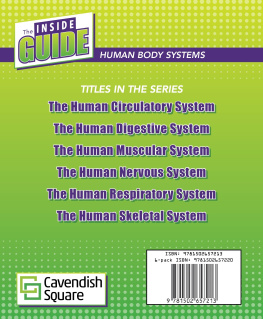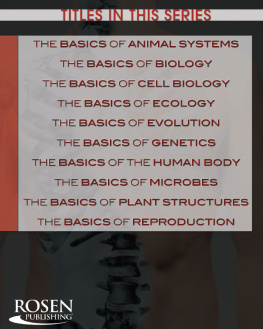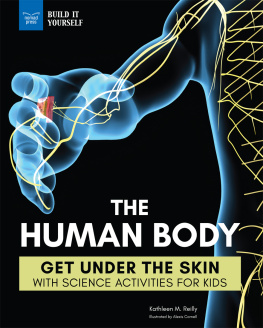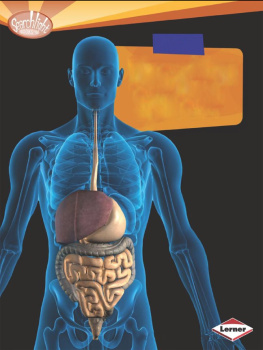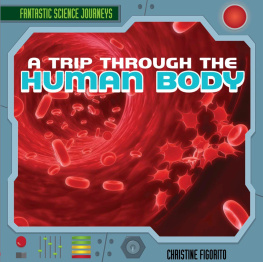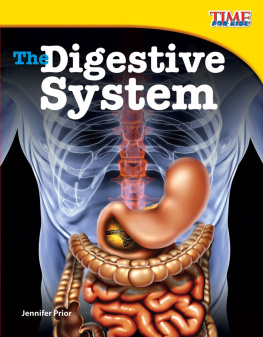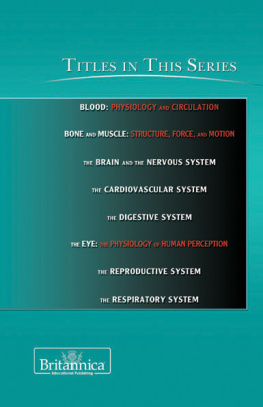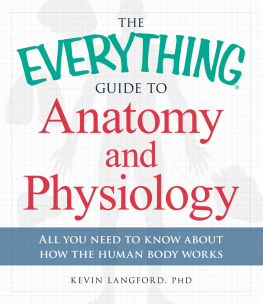
Published in 2021 by Cavendish Square Publishing, LLC
243 5th Avenue, Suite 136, New York, NY 10016
Copyright 2021 by Cavendish Square Publishing, LLC
First Edition
No part of this publication may be reproduced, stored in a retrieval system, or transmitted in any form or by any meanselectronic, mechanical, photocopying, recording, or otherwisewithout the prior permission of the copyright owner. Request for permission should be addressed to Permissions, Cavendish Square Publishing, 243 5th Avenue, Suite 136, New York, NY 10016. Tel (877) 980-4450; fax (877) 980-4454.
Website: cavendishsq.com
This publication represents the opinions and views of the author based on his or her personal experience, knowledge, and research. The information in this book serves as a general guide only. The author and publisher have used their best efforts in preparing this book and disclaim liability rising directly or indirectly from the use and application of this book.
Portions of this work were originally authored by John M. Shea, MD, and published as The Digestive System (The Human Body). All new material this edition authored by Cassie M. Lawton.
All websites were available and accurate when this book was sent to press.
Library of Congress Cataloging-in-Publication Data
Names: Lawton, Cassie M., author.
Title: The human digestive system / Cassie M. Lawton.
Description: First edition. | New York, NY: Cavendish Square Publishing, 2021. |
Series: The inside guide: human body systems | Includes index.
Identifiers: LCCN 2019051921 (print) | LCCN 2019051922 (ebook) |
ISBN 9781502657237 (library binding) | ISBN 9781502657213 (paperback) |
ISBN 9781502657220 (set) | ISBN 9781502657244 (ebook)
Subjects: LCSH: Digestive organs--Juvenile literature.
Classification: LCC QP145 .L39 2021 (print) | LCC QP145 (ebook) |
DDC 612.3--dc23
LC record available at https://lccn.loc.gov/2019051921
LC ebook record available at https://lccn.loc.gov/2019051922
Editor: Kristen Susienka
Copy Editor: Nathan Heidelberger
Designer: Deanna Paternostro
The photographs in this book are used by permission and through the courtesy of: Cover Sebastian Kaulitzki/.
Some of the images in this book illustrate individuals who are models. The depictions do not imply actual situations or events.
CPSIA compliance information: Batch #CS20CSQ: For further information contact Cavendish Square Publishing LLC, New York, New York, at 1-877-980-4450.
Printed in the United States of America

CONTENTS

Food helps people live. Everyone needs to eat!
Chapter One
EATING TO LIVE
F ood is an important part of life. All living things need it to survive. More specifically, they need nutrients. Nutrients are substances found in food that provide energy and materials the body needs to grow. Some living things, such as plants, make their own food from sunlight. This process is called photosynthesis. Other , need only a tiny amount of nutrients to grow.
The human body, however, has many parts. It needs a lot of nutrients to keep working. If they have to, humans can survive more than a week without food or a couple of days without water, but without enough nutrients, the human body doesnt work properly. The food we eat and drinkwhether its an apple, a slice of pizza, or a glass of milkcontains nutrients our body needs. Our bodies must first break these foods down into very small pieces so we can use the nutrients in them. The process of breaking down food into basic nutrients is called digestion. It allows the body to get nutrients it needs and get rid of other materials it doesnt need. Digestion takes place in the body parts that make up the digestive system.
Fast Fact
Doctors recommend people drink about 8 cups (2 liters) of water every day.

The digestive system weaves a path through the human body.
Breaking Down the Digestive System
Think of the digestive system as one continuous tract, or tube. It starts with the mouth, where we put food and drinks in, and ends with the anus, where undigested material, called waste, leaves the body. Every part of the digestive system has a specific job to help us get the most nutrients from our food. Most jobs involve breaking down food and moving nutrients from the digestive tract to the bloodstream. From there, blood carries the nutrients to the parts of the body that need them.
The Joy of Food
Nutrients in our food play a special part in our health. Carbohydrates, which include sugars and , are the bodys main source of energy. Proteinswhich are made up of chemicals called amino acidsare the basic building blocks for the human body. Lipids, sometimes known as fats, are made from chemicals called fatty acids. Theyre important for both growth and energy. However, too much fat can lead to dangerous problems such as heart attacks.
VITAMINS AND MINERALS
Vitamins and minerals are important parts of food. They help the body function. There are many kinds of vitamins and minerals, and each plays a very special part in our health. For example, vitamin A is used by the eyes to help with vision. An example of a food with vitamin A is a carrot. Vitamin C is used by the to help fight off illnesses and to heal cuts. You can get vitamin C from orange juice, strawberries, and kale. Minerals are natural substances such as calcium and zinc. The human body needs these substances to carry out many processes, including the growth of bones.

Eating a balanced diet can help people make sure their digestive system is taking in all the nutrients they need.

Salmon is a source of a healthy fat called omega-3.
Fast Fact
A fat called omega-3 is found in fish. Its a type of fat that helps prevent some diseases.
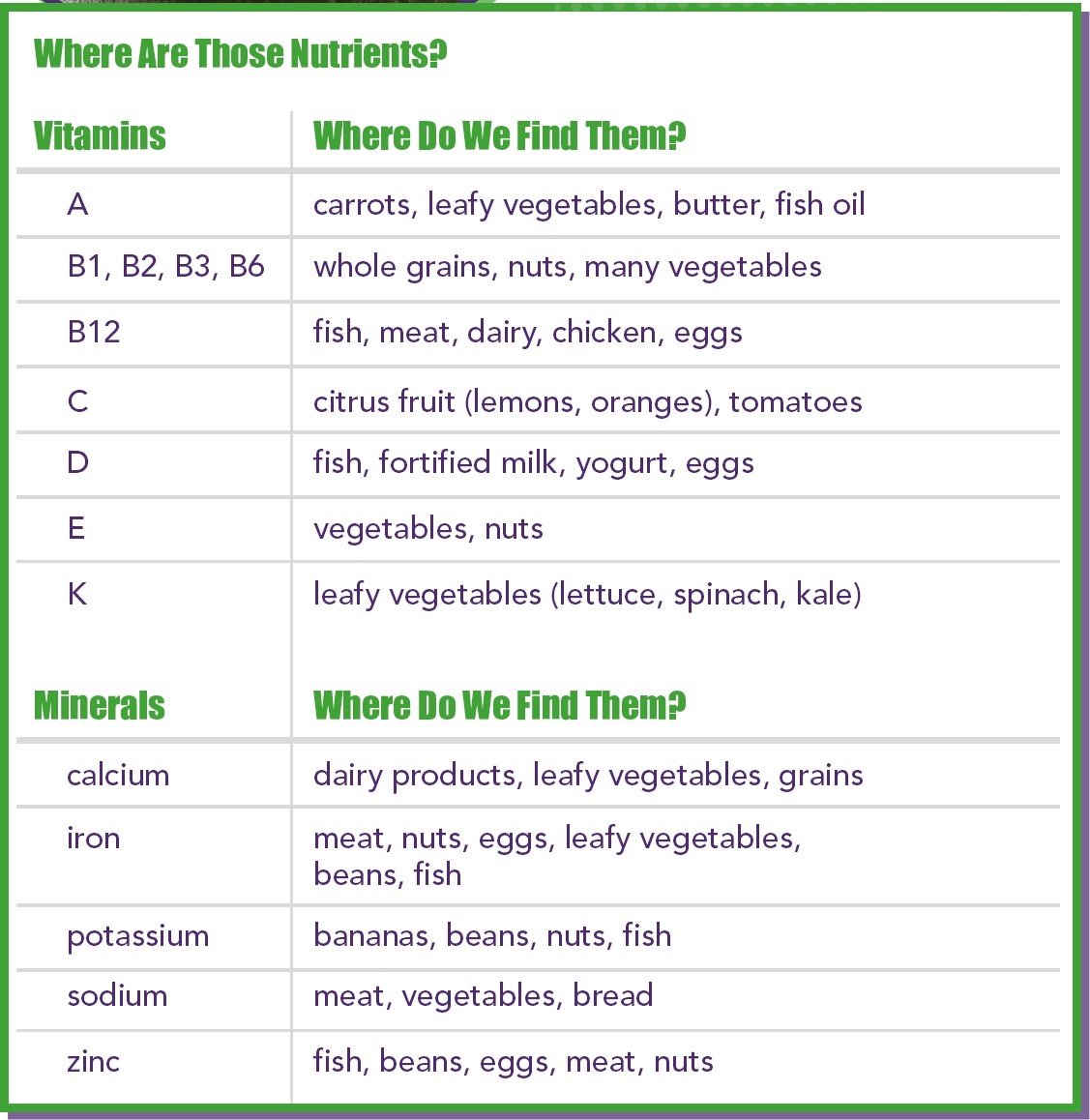

People need to eat plenty of carbohydrates, proteins, and fiber, and drink enough water to stay healthy.
Water is extremely important for the body. More than half the human body is made of water, and we need to drink enough every day to help keep our bodies well . If someone doesnt get enough water, they could end up in the hospital. On the other hand, too much water can hurt a person too.
Fiber is a substance that helps regulate the digestive system, or keep it running properly. Our bodies dont digest and absorb, or take in, fiber for growth and health. Instead, undigested fiber helps push food forward through the digestive tract.
Fast Fact
Some foods that have lots of fiber are oatmeal, baked beans, and boiled broccoli.
Next page
